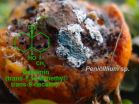(Press-News.org) A protein known to regulate how cells process glucose also appears to be a tumor suppressor, adding to the potential that therapies directed at cellular metabolism may help suppress tumor growth. In their report in the Dec. 7 issue of Cell, a multi-institutional research team describes finding that cells lacking the enzyme SIRT6, which controls how cells process glucose, quickly become cancerous. They also found evidence that uncontrolled glycolysis, a stage in normal glucose metabolism, may drive tumor formation in the absence of SIRT6 and that suppressing glycolysis can halt tumor formation.
"Our study provides solid evidence that SIRT6 may function as a tumor suppressor by regulating glycolytic metabolism in cancer cells," says Raul Mostoslavsky, MD, PhD, of the Massachusetts General Hospital (MGH) Cancer Center, senior author of the report. "Critically, our findings indicate that, in tumors driven by low SIRT6 levels, drugs that may inhibit glycolysis – currently a hot research topic among biotechnology companies – could have therapeutic benefits."
The hypothesis that a switch in the way cells process glucose could set off tumor formation was first proposed in the 1920s by German researcher Otto Warburg, who later received the Nobel Prize for discoveries in cellular respiration. He observed that, while glucose metabolism is normally a two-step process involving glycolysis in the cellular cytoplasm followed by cellular respiration in the mitochondria, in cancer cells rates of glycolysis are up to 200 times higher. Warburg's proposition that this switch in glucose processing was a primary cause of cancer did not hold up, as subsequent research supported the role of mutations in oncogenes, which can spur tumor growth if overexpressed, and tumor suppressors, which keep cell proliferation under control. But recent studies have suggested that alterations in cellular metabolism may be part of the process through which activated oncogenes or inactivated tumor suppressors stimulate cancer formation.
A 2010 study led by Mostoslavsky found that the absence of SIRT6 – one of a family of proteins called sirtuins that regulate many important biological pathways – appears to "flip the switch" from normal glucose processing to the excess rates of glycolysis seen in cancer cells. The current study was specifically designed to investigate whether SIRT6's control of glucose metabolism also suppresses tumor formation. The research team first showed that cultured skin cells from embryonic mice lacking SIRT6 proliferated rapidly and quickly formed tumors when injected into adult mice. They also confirmed elevated glycolysis levels in both cells lacking SIRT6 and tumor cells and found that formation of tumors through SIRT6 deficiency did not appear to involve oncogene activation.
Analysis of tumor samples from patients found reduced SIRT6 expression in many – particularly in colorectal and pancreatic tumors. Even among patients whose tumors appeared to be more aggressive, higher levels of SIRT6 expression may have delayed or, for some, prevented relapse. In a mouse model programmed to develop numerous colon polyps, the researchers showed that lack of intestinal SIRT6 expression tripled the formation of polyps, many of which became invasive tumors. Treating the animals with a glycolytic inhibitor significantly reduced tumor formation, even in the absence of SIRT6.
"Our results indicate that, at least in certain cancers, inhibiting glycolytic metabolism could provide a strong alternative way to halt cancer growth, possibly acting synergistically with current anti-tumor therapies," says Mostoslavsky, an assistant professor of Medicine at Harvard Medical School. "Cancer metabolism has only recently emerged as a hallmark of tumorigenesis, and the field is rapidly expanding. With the current pace of research and the speed at which some basic discoveries are moving into translational studies, it is likely that drugs targeting cancer metabolism may be available to patients in the near future."
INFORMATION:
Carlos Sebastián, PhD, a postdoctoral fellow in Mostoslavsky's lab at the MGH Cancer Center is lead author of the Cell report, and David Lombard, MD, of the University of Michigan is co-corresponding author. Support for the work includes National Institutes of Health grants GM093072-01, DK088190-01A1 and GM101171.
Massachusetts General Hospital, founded in 1811, is the original and largest teaching hospital of Harvard Medical School. The MGH conducts the largest hospital-based research program in the United States, with an annual research budget of more than $750 million and major research centers in AIDS, cardiovascular research, cancer, computational and integrative biology, cutaneous biology, human genetics, medical imaging, neurodegenerative disorders, regenerative medicine, reproductive biology, systems biology, transplantation biology and photomedicine. In July 2012, MGH moved into the number one spot on the 2012-13 U.S. News & World Report list of "America's Best Hospitals."
END
Despite their modern-day diversity of language, lifestyle, and religion, Europe's widespread Romani population shares a common, if complex, past. It all began in northwestern India about 1,500 years ago, according to a study reported on December 6th in Current Biology, a Cell Press publication, that offers the first genome-wide perspective on Romani origins and demographic history.
The Romani represent the largest minority group in Europe, consisting of approximately 11 million people. That means the size of the Romani population rivals that of several European countries, ...
Mice living in the high-altitude, oxygen-starved environment of the Andean mountains survive those harsh conditions by fueling their muscles with carbohydrates. The findings, reported online on December 6 in Current Biology, a Cell Press publication, provide the first compelling evidence of a clear difference in energy metabolism between high- and low-altitude native mammals.
"The high-altitude mice we examined in this study are a rare exception to a general exercise fuel use pattern seen in lowland mammals," said Marie-Pierre Schippers of McMaster University. "Studying ...
VIDEO:
The ability to detect rotten food is so crucial for survival that even flies have a dedicated neural circuit to do just that, according to a study published on December...
Click here for more information.
The ability to detect rotten food is so crucial for survival that even flies have a dedicated neural circuit to do just that, according to a study published on December 6th in the Cell Press journal Cell. The brain circuit allows flies to avoid feeding and laying ...
This press release is available in Spanish and French. A collaborative study conducted in Mexico by researchers from the West Virginia University-Charleston (US), Universidad Popular Autónoma del Estado de Puebla (México), Universidad de Chile and the Institute of Molecular Epidemiology of the Universidad Católica de la Santísima Concepción (Chile), revealed that opinion surveys used by researchers from the Guttmacher Institute overestimated figures of induced abortion in the Federal District of Mexico (Mexico DF) up to 10-fold. The research recently published in the International ...
VIDEO:
Bill Hansson and Marcus Stensmyr explain their results now published in CELL.
Click here for more information.
Consuming putrid food can be lethal as it allows bacterial pathogens to enter the digestive system. To detect signs of decay and thus allowing us and other animals to avoid such food poisoning is one of the main tasks of the sense of smell. Behavioral scientists and neurobiologists at the Max Planck Institute for Chemical Ecology in Jena, Germany, have ...
LA JOLLA, CA – December 6, 2012 – For scientists who study the genetics of hearing and deafness, finding the exact genetic machinery in the inner ear that responds to sound waves and converts them into electrical impulses, the language of the brain, has been something of a holy grail.
Now this quest has come to fruition. Scientists at The Scripps Research Institute (TSRI) in La Jolla, CA, have identified a critical component of this ear-to-brain conversion—a protein called TMHS. This protein is a component of the so-called mechanotransduction channels in the ear, which ...
For the first time, a silicon-based optical fiber with solar-cell capabilities has been developed that has been shown to be scalable to many meters in length. The research opens the door to the possibility of weaving together solar-cell silicon wires to create flexible, curved, or twisted solar fabrics. The findings by an international team of chemists, physicists, and engineers, led by John Badding, a professor of chemistry at Penn State University, will be posted by the journal Advanced Materials in an early online edition on 6 December 2012 and will be published on a ...
In Hubble's image, NGC 922 clearly reveals itself not to be a normal spiral galaxy. The spiral arms are disrupted, a stream of stars extends out towards the top of the image, and a bright ring of nebulae encircles the core. Observing with NASA's Chandra X-ray Observatory reveals more chaos in the form of ultraluminous X-ray sources dotted around the galaxy.
NGC 922's current unusual form is a result of a cosmic bullseye millions of years ago. A smaller galaxy, catalogued as 2MASXI J0224301-244443, plunged right through the heart of NGC 922 and shot out the other side. ...
AMHERST, Mass. – Molecular chaperones have emerged as exciting new potential drug targets, because scientists want to learn how to stop cancer cells, for example, from using chaperones to enable their uncontrolled growth. Now a team of biochemists at the University of Massachusetts Amherst led by Lila Gierasch have deciphered key steps in the mechanism of the Hsp70 molecular machine by "trapping" this chaperone in action, providing a dynamic snapshot of its mechanism.
She and colleagues describe this work in the current issue of Cell. Gierasch's research on Hsp70 chaperones ...
The latest telescope at ESO's Paranal Observatory in Chile -- the VLT Survey Telescope (VST) -- was inaugurated today at the Italian National Institute for Astrophysics (INAF) Observatory of Capodimonte, in Naples, Italy. The ceremony was attended by the Mayor of Naples, Luigi De Magistris, the INAF President, Giovanni Bignami, the ESO representatives Bruno Leibundgut and Roberto Tamai, and the main promoter of the telescope, Massimo Capaccioli of the University of Naples Federico II and INAF.
The VST is a state-of-the-art 2.6-metre telescope, with the huge 268-megapixel ...






